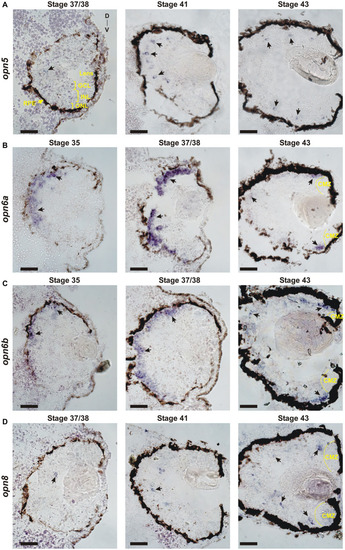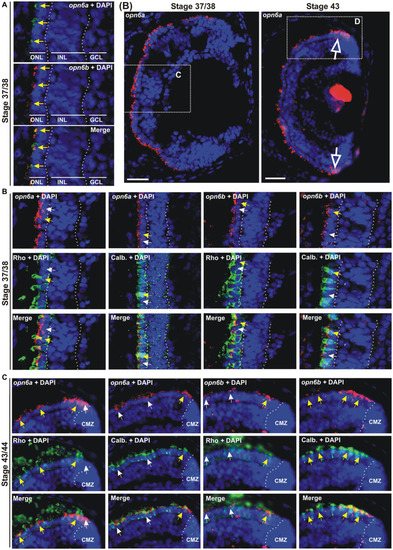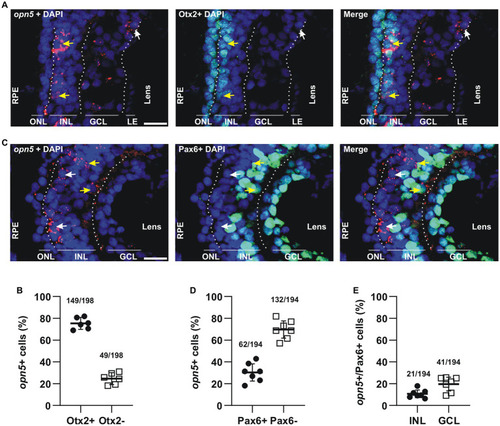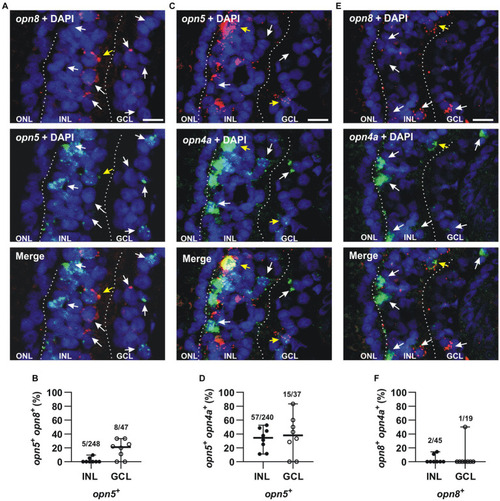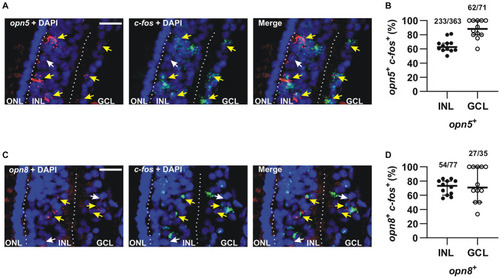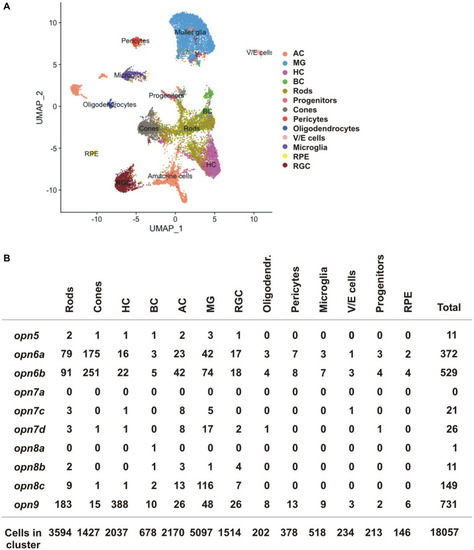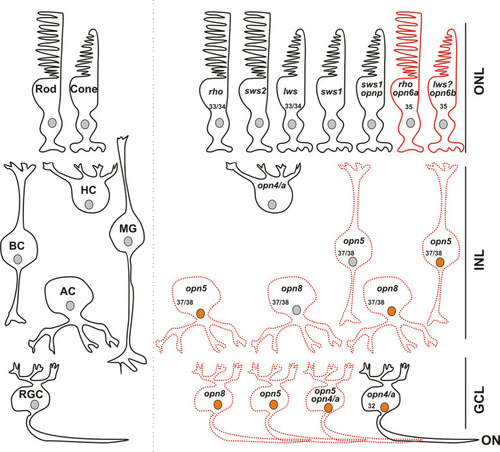- Title
-
Cell-type expression and activation by light of neuropsins in the developing and mature Xenopus retina
- Authors
- Man, L.L.H., Storey, S.S., Bertolesi, G.E., McFarlane, S.
- Source
- Full text @ Front. Cell. Neurosci.
|
Developmental expression of |
|
|
|
|
|
|
|
|
|
The majority of |
|
scRNA-seq data from the adult zebrafish ( |
|
Opsin-expressing cells in the retina of a stage 43/44 |

